About SAO: Today
The Smithsonian Astrophysical Observatory (SAO) is one part of the Harvard-Smithsonian Center for Astrophysics (CfA), where leading astronomers ask, test, and answer some of humanity’s greatest questions.
Scientists at the CfA have mapped the structure of galaxies, discovered exoplanets, and built, launched, and operated NASA space-based telescopes. Today the CfA is shaping the future of astronomy, developing new technology and research to uncover the mysteries of the universe — including the search for life.
Giant Magellan Telescope + G-CLEF
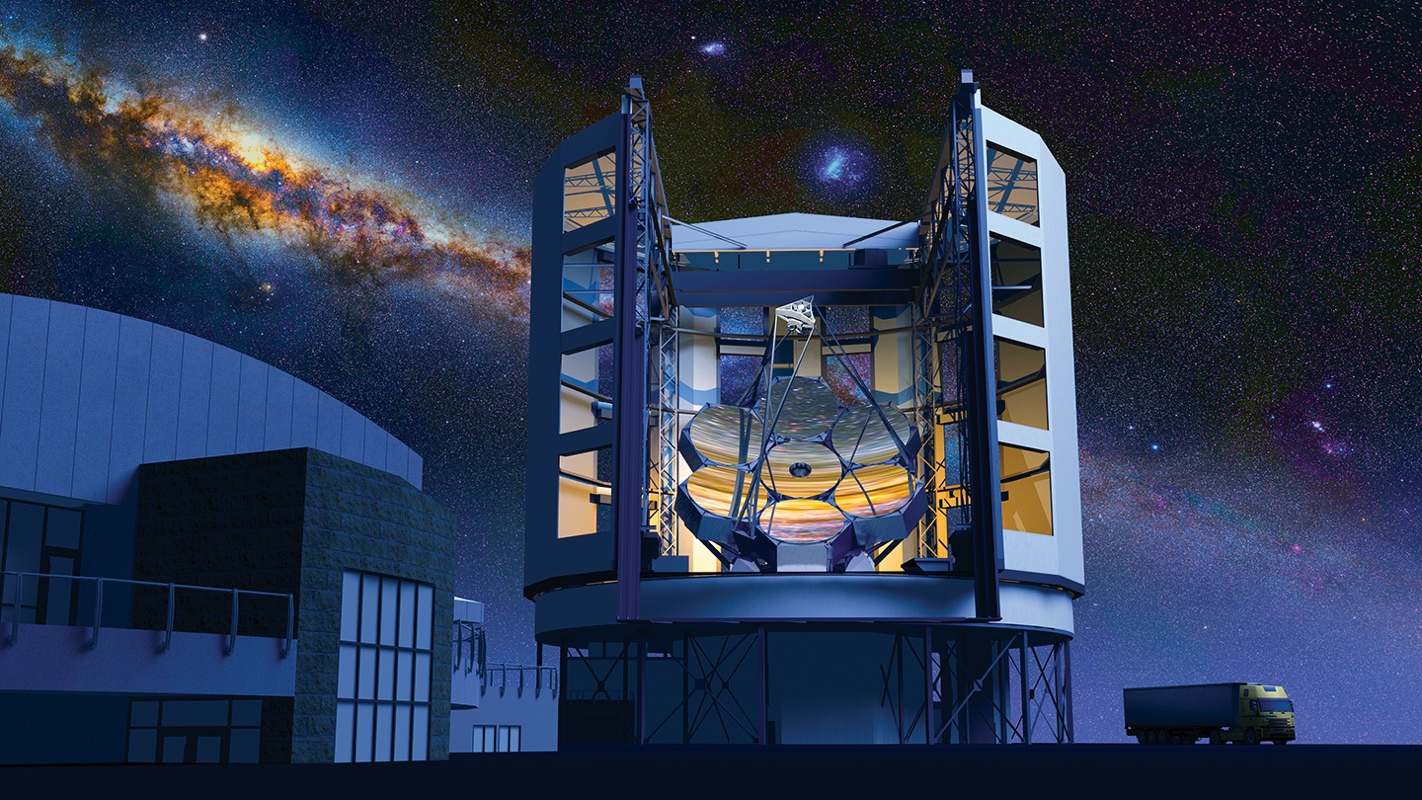
Finding life elsewhere in the universe will require the power of the Giant Magellan Telescope (GMT) and its GMT-Consortium Large Earth Finder, or G-CLEF instrument.
The GMT, currently under construction in Chile, is one of the first in a next generation of giant ground-based telescopes, the product of a consortium of leading universities and science institutions. By creating the largest light collecting area of any telescope before with seven of today's largest stiff monolith mirrors, astronomers will be able to look deeper into the history of the universe, with higher precision, than ever before.
SAO is leading the design and development of the G-CLEF instrument, the fiber-fed spectrograph selected as the first instrument to be operated on the GMT, which will capitalize on the unequaled collection capacity of the GMT as the most sensitive spectrograph ever built.
Light captured by the GMT will be split into its component colors and be analyzed for “biomarkers” that would signal the presence of life. In particular, G-CLEF will be able to reveal the presence of oxygen in the atmospheres of exoplanets in the “goldilocks zone” of stars outside our solar system. If we find oxygen, we’ve likely found life.
MEARTH
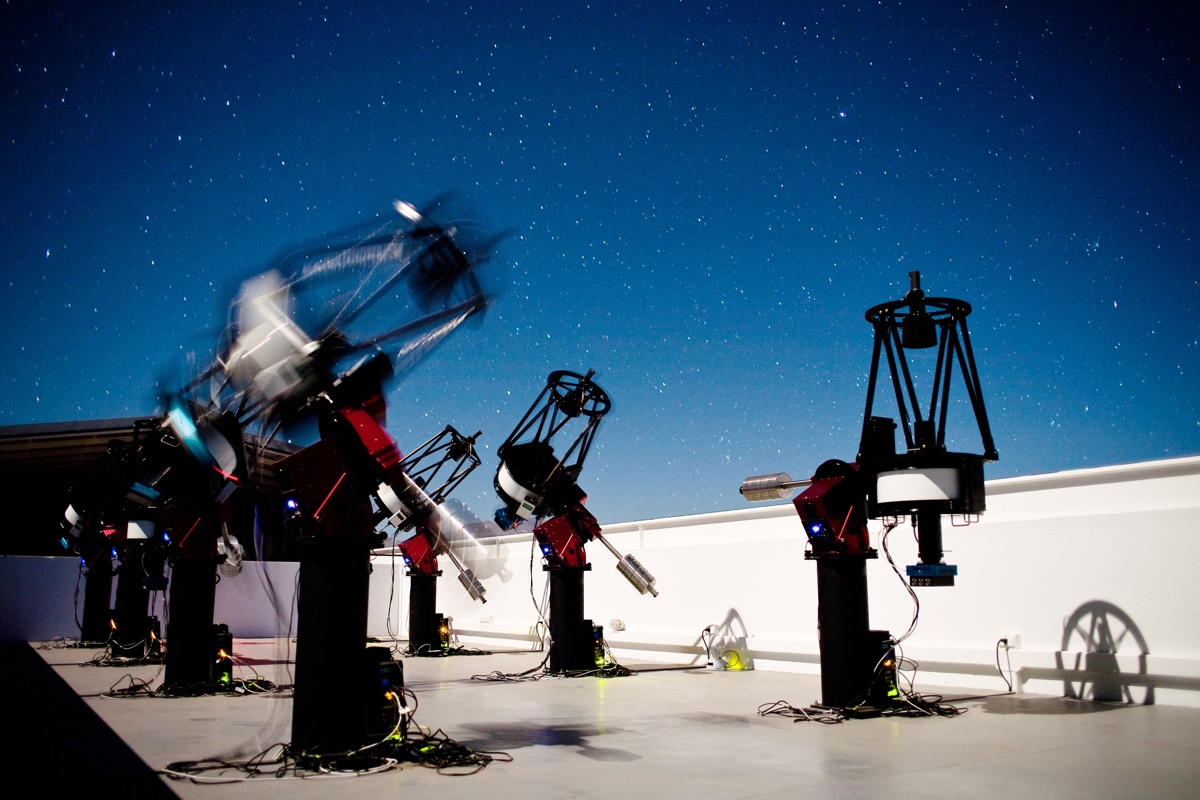
The MEarth Observatories (MEarth-North in Arizona and MEarth-South in Chile) use eight identical robotically-controlled telescopes to record the infrared brightness of stars. By measuring this brightness over a long period of time, they can search for dips caused by orbiting planets that block some of the star’s light. Specifically, MEarth is searching for Earth-sized planets transiting M dwarf stars. Recently MEarth-South discovered LHS 1140b, a rocky Super Earth in the habitable zone of a nearby star which looks promising for signs of life.
MINERVA
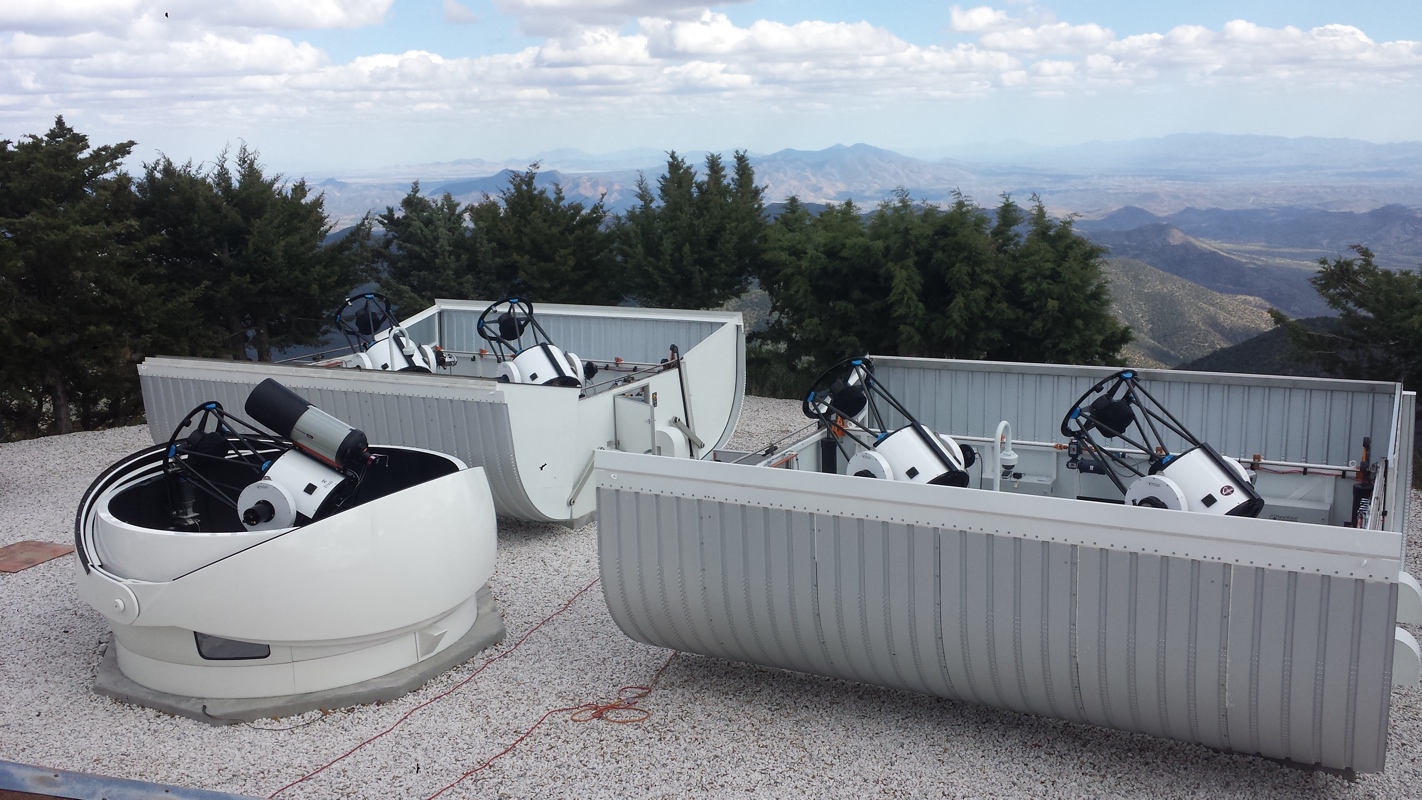
The MINiature Exoplanet Radial Velocity Array (MINERVA) project is located on the ridge of Mt. Hopkins at the Smithsonian's F. L. Whipple Observatory in Arizona. It is an array of small-aperture robotic telescopes using photometry and high-resolution spectroscopy to discover Earth-like planets around nearby stars and super-Earths in the habitable zones of the closest Sun-like stars. Operational since 2015, the multi-telescope structure allows for each telescope to observe separate targets, or for the collection of telescopes to observe a single target, increasing the effective aperture.
Chandra X-ray Center
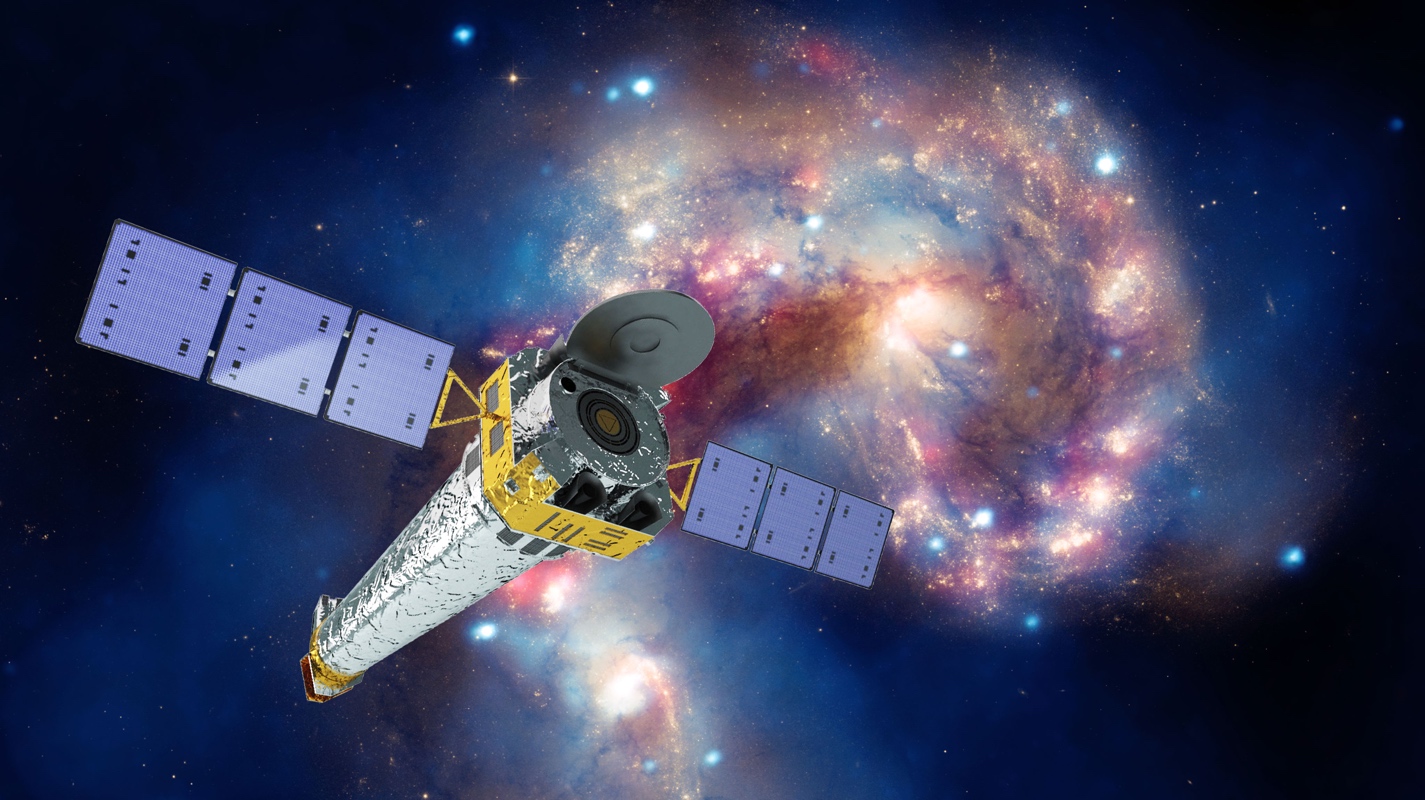
SAO operates the Chandra X-ray Observatory, a NASA Great Observatory, and built its High Resolution Camera. The world's premier X-ray observatory launched in 1999, Chandra is in a 64-hour Earth orbit making high-resolution observations of the hottest and most violent regions of the Universe.
Observations include exploded stars, clusters of galaxies, and matter around black holes. The Chandra X-ray Center serves as both operations and science center for the satellite, including the annual proposal cycle, planning for and observing celestial sources, processing, distributing and archiving the data, and providing analysis software and support to scientists.
X-Ray Optics
To advance the field of X-ray astrophysics, future telescopes will require larger collecting area and higher angular resolution, while minimizing the mass that must be lifted into orbit. Scientists in High Energy Astrophysics at the CfA are working to achieve these goals by developing new mirror fabrication technologies, multi-layer coatings, and active/adjustable optics to carry out large area surveys for clusters of galaxies in the future.
Event Horizon Telescope (EHT)
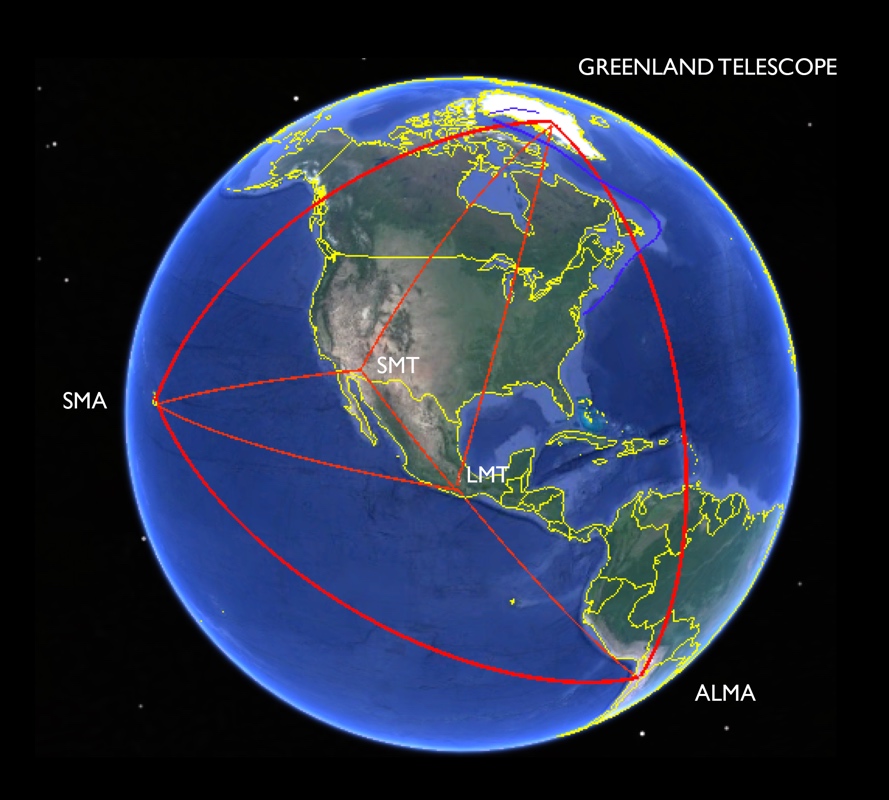
The EHT is a global network of radio telescopes that links together to function as one giant telescope the size of Earth. Working with collaborators around the globe, SAO telescopes like the Greenland Telescope and Submillimeter Array join together in hopes of capturing a never-before-seen image of the event horizon of a black hole.
Submillimeter Array
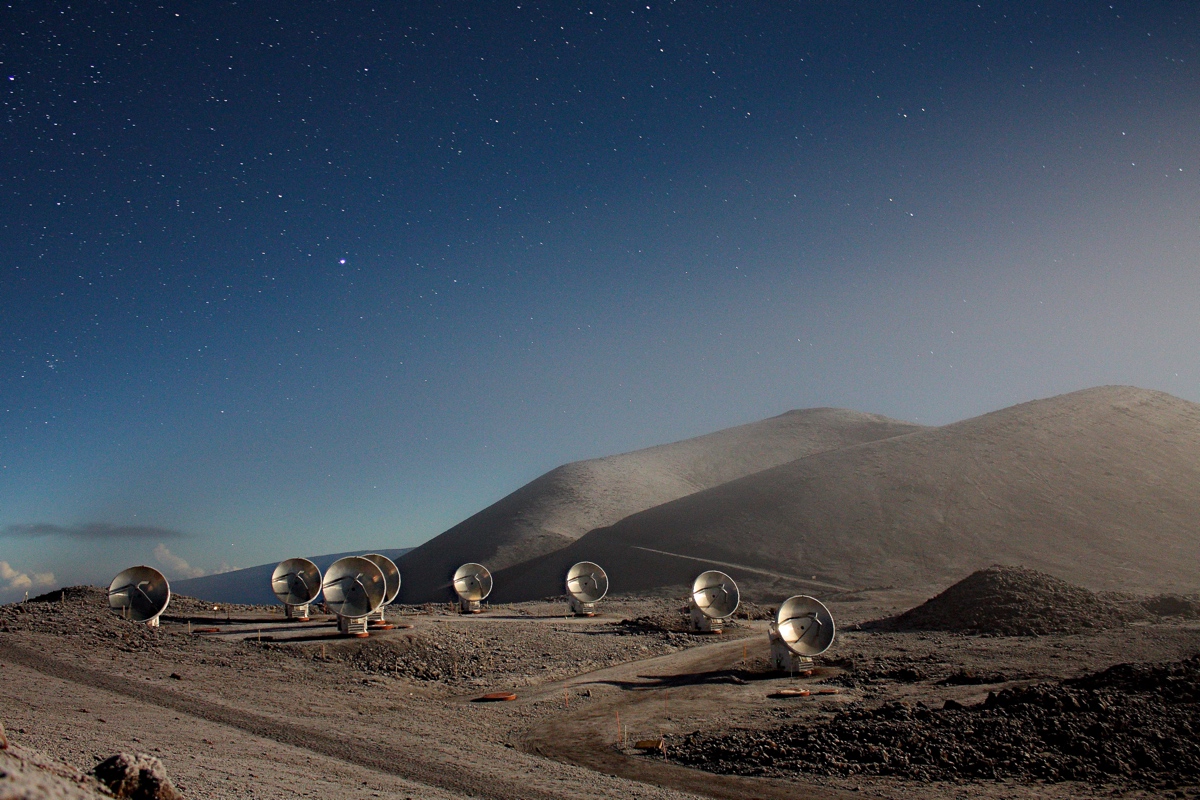
The Submillimeter Array (SMA) explores the universe observing millimeter and submillimeter radiation. The array includes eight movable antennas and was the world's first imaging interferometric telescope at submillimeter wavelengths.
Detecting submillimeter emission plays a vital role in studying the birth and death of stars and planets. When stars are born out of dense interstellar clouds, their first visible light cannot penetrate the clouds. The SMA can see through those clouds and acquire detailed images of the submillimeter light, thereby witnessing the birth of stars where optical telescopes or human eyes would see only darkness.
The SMA also plays a vital role in the Event Horizon Telescope, a global network of telescopes that currently aims to capture the first ever image of an event horizon – the boundary of no return – of a black hole.
Greenland Telescope
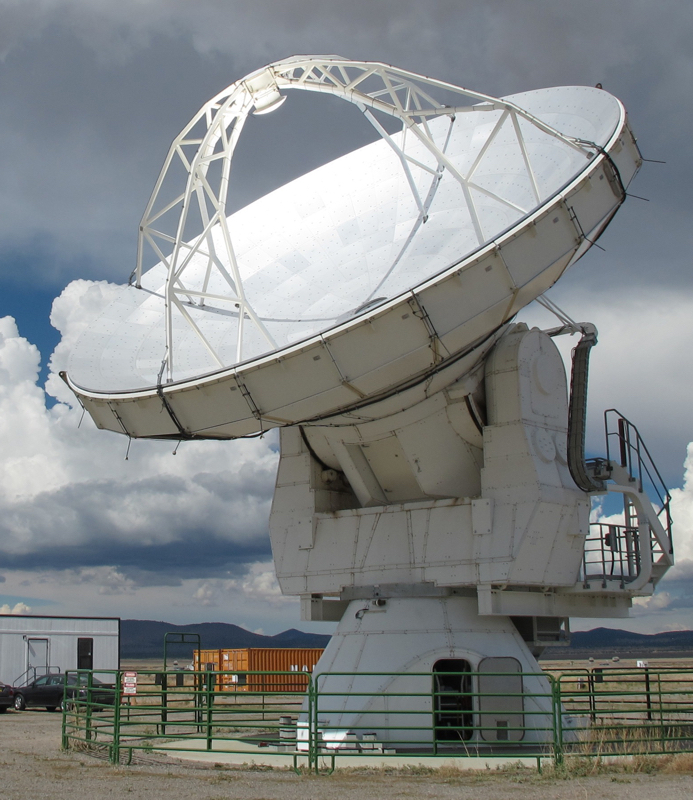
The Greenland Telescope will allow scientists to explore some of the Universe’s deepest mysteries, including the use of black holes to study gravity in conditions that cannot be replicated here on Earth. Additionally, it, along with SMA, will play an important role in the array of telescopes working to take our first image of a black hole with the Event Horizon Telescope.
The MMT Observatory
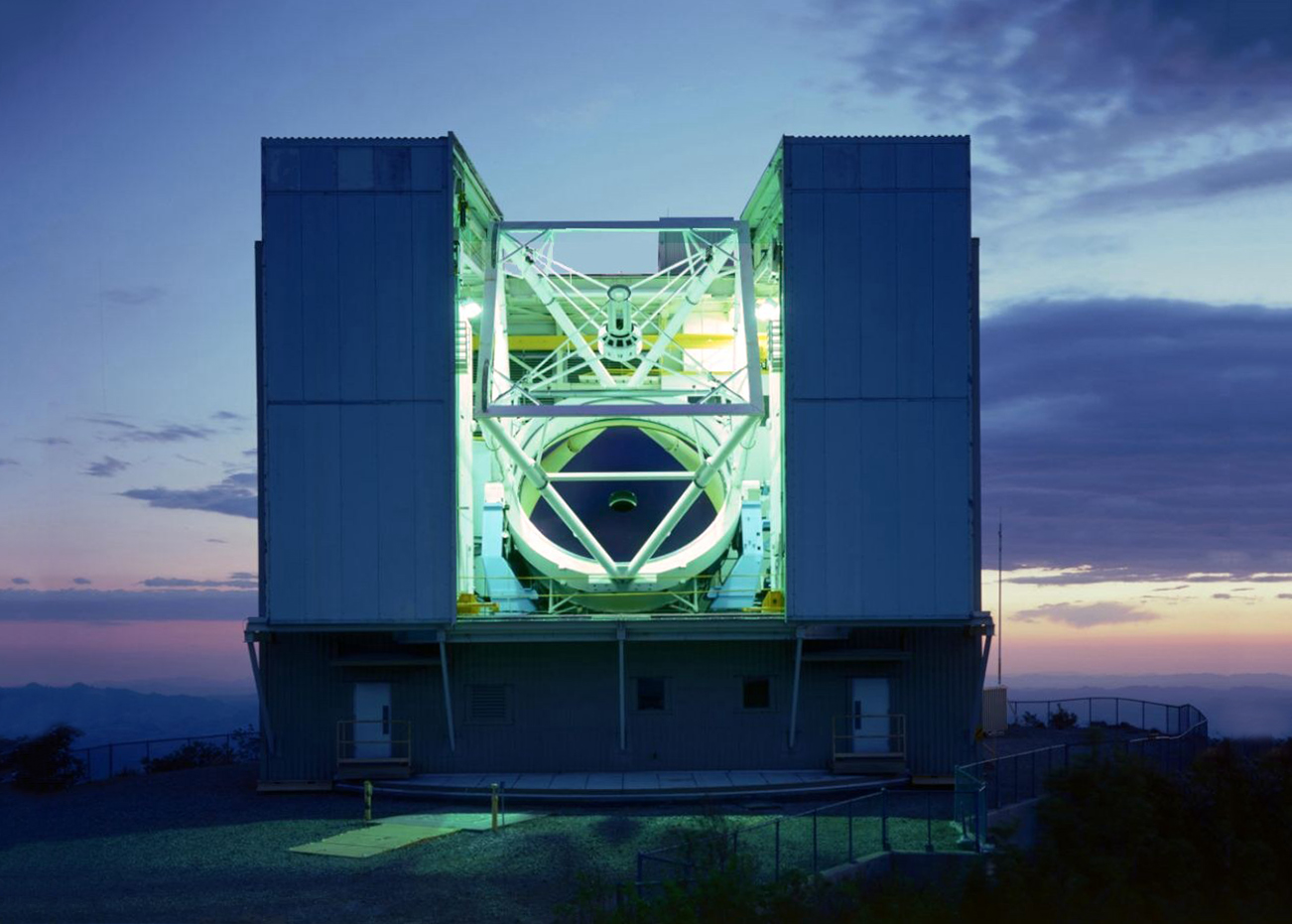
The 6.5 meter (21 ft) diameter MMT is operated by the MMT Observatory (MMTO), a joint venture of The Smithsonian Institution and The University of Arizona. The MMT is located on the summit of Mt. Hopkins south of Tucson, Arizona on the grounds of the Smithsonian's Fred Lawrence Whipple Observatory, along with a number of other Smithsonian operated telescopes.
At the time of its opening in 1979, the MMT was the third largest optical telescope in the world. The telescope’s primary mirror assembly creates a collecting surface with a design optimal for both optical and infrared astronomy of faint and low-contrast objects.
The latest instrument designed for the MMT, BINOSPEC, is an imaging spectrograph designed to observe adjacent 8-arcminute by 15-arcminute fields of view. Once operational in 2017, it will focus on three scientific themes: the nearby universe, the distant universe, and rapidly changing or temporary events known as transients. It will be more sensitive than its predecessor instrument, enabling studies of fainter and more distant objects.
Astrophysics Data System (ADS)

The SAO/NASA Astrophysics Data System (ADS) is a Digital Library portal for researchers in Astronomy and Physics, operated by SAO under a NASA grant. Launched in 1993, the ADS maintains three bibliographic databases containing more than 12.6 million records covering publications in Astronomy and Astrophysics, Physics, and the arXiv e-prints. Abstracts and full-text of major astronomy and physics publications are indexed and easily searchable.
In addition to maintaining its bibliographic corpus, the ADS tracks citations and usage of its records to provide advanced discovery and evaluation capabilities. The ADS provides access and pointers to a wealth of external resources, including electronic articles available from publisher's websites, astronomical object information, data catalogs and data sets hosted by external archives.
The ADS was a pioneer in the field of data curation and integration in astrophysics, bringing science literature online and making research more readily accessible to the broader scientific community. This project paved the way for new methods of data maintenance and active storage and continues to be a foundation of research for scientists around the world.
About SAO: An early focus on the Sun
While today research at SAO ranges from subatomic particles to black holes and covers nearly every wavelength of light on the electromagnetic spectrum, the unit’s founding research was focused on the sun. In fact, most of SAO’s research stations and expeditions were, at the beginning, for solar observations. Some of that research included the study of solar radiation and the solar constant -- the amount of energy from the sun that strikes the outer edge of the earth’s atmosphere.
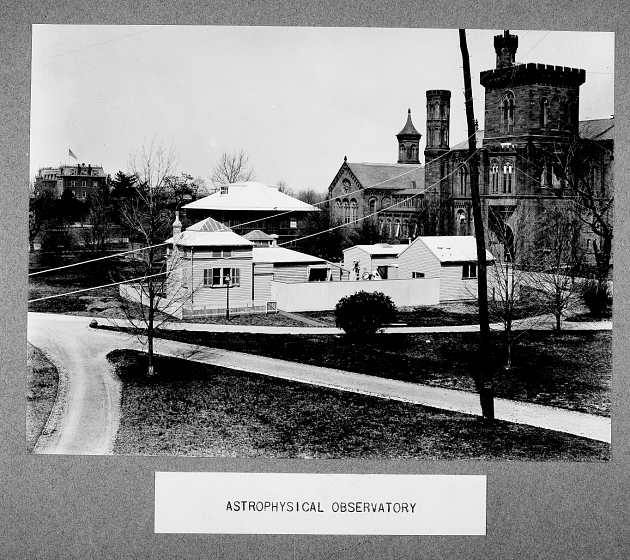
The Smithsonian Astrophysical Observatory (SAO) was founded in 1890 and began its tenure alongside other Smithsonian units on the Mall in Washington, D.C. In fact, operations were originally in a shed behind the Smithsonian Castle.
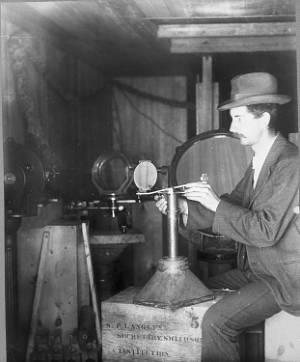
Charles Greeley Abbot, then Acting Director of the Smithsonian Astrophysical Observatory (SAO), pictured with bolometric apparatus, was one of a team of Smithsonian scientists who traveled to Wadesboro, North Carolina, to study an eclipse of the sun in 1900. Abbot later became director of the SAO and Fifth Secretary (1928-1944) of the Smithsonian.
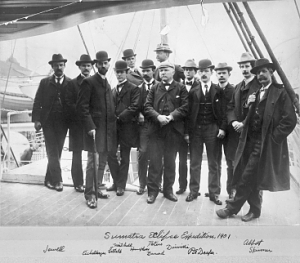
Members of the Sumatra Eclipse Expedition in 1901: (l-r) Jewell, Eichelberger, Dr. Mitchell, Littell, Dr. Humphries, Peters, Professor Barnard, Dinwiddie, Paul A. Draper, Astrophysicist Charles Greeley Abbot (Aid Acting in Charge of the Smithsonian Astrophysical Observatory (SAO), later to become the Director of the SAO and Fifth Secretary of the Smithsonian, 1928-1944), and Professor Skinner.
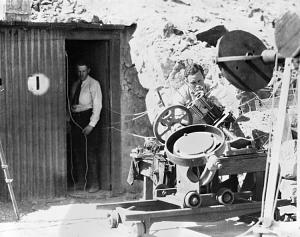
Chile has long been a destination for great astronomy. Here, solar observation instruments can be seen outside the entrance to the instrument tunnel at the Smithsonian Astrophysical Observatory in Mt. Montezuma, Chile. The instruments were in use from 1920 to 1955.

A solar observing station of the Smithsonian Astrophysical Observatory located at Mt. St. Katherine, Egypt, from 1933 to 1937. This view shows the observatory (top) and living quarters at the site.
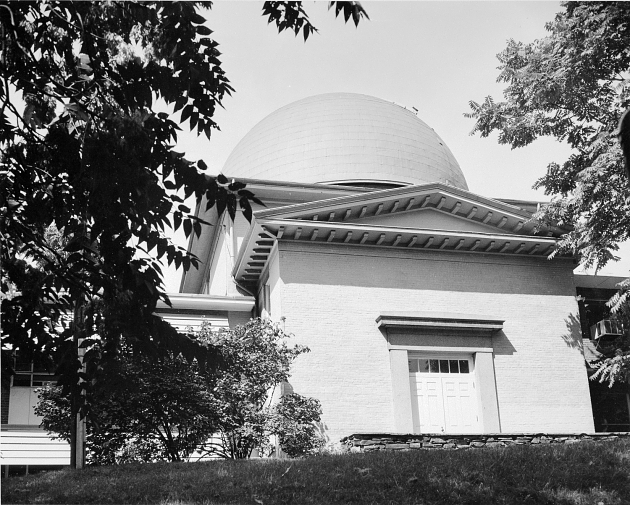
By the end of World War II, it was clear that the Observatory needed a fresh approach to its research and scientific goals. In 1955, under the leadership of Secretary Leonard Carmichael, SAO moved from D.C. to the campus of Harvard College in Cambridge, Massachusetts. The location allowed SAO to benefit from Harvard’s leadership in astronomy and astrophysics. The move proved to be an important and highly successful one for SAO, as its programs and staff grew in size and reputation in the decades that followed.
In 1973, the Smithsonian Astrophysical Observatory and Harvard College Observatory formalized their partnership in a short memorandum of understanding, signed by Smithsonian Secretary S. Dillon Ripley and Harvard University President Derek Bok to establish the Harvard-Smithsonian Center for Astrophysics. The collaboration is among the world’s largest and most renowned centers dedicated to the study of the Universe.